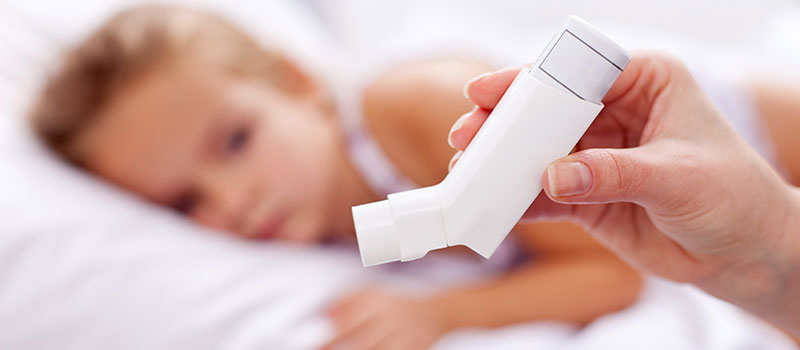Pediatric allergies are a common cause of asthma symptoms, sinus infections, sleep disturbances and other troubles that can interfere with your child’s comfort and development. In addition to following your child’s treatment protocol, controlling their exposure to allergens can help reduce their allergy symptoms and let them get back to being kids.
1. Overhaul the Bed
Bedding can be a significant source of two indoor allergies, dust mites and down. Spending eight hours or more a night in a bed of allergens can cause children with indoor allergies to wake up with exacerbated symptoms. Coming at the problem from multiple angles can support a reduction in symptoms.
Bedding should get a hot water wash once a week. The water has to reach 120-degrees to kill dust mites. A hot dry cycle can also help kill the mites. Pet bedding and blankets in shared living spaces should also be washed on a weekly basis. Pillows, even those kept in zippered cases, should get a wash at least twice a year. The fragrances in detergents and fabric softeners can be respiratory irritants and trigger skin allergies, so choose “free and clear” options.
Purchase pillows, duvet covers and mattress toppers with hypoallergenic filling. Keep in mind that while memory foam is hypoallergenic, it can’t be put in a washing machine or dried in a clothes dryer. It must be hand-rinsed until the water runs clear and line dried.
Pillows, mattresses and duvets can be put inside zippered allergy covers that will contain dust mite allergens. Covers with tighter weaves are the most effective. Weave tightness determined by pore size, and most cover manufacturers happily advertise their weave’s pore tightness in microns. Dust mite allergens average 2.5 microns in size, so look for the tightest weaves you can find.
2. Address Your Air
Indoor and tracked in outdoor allergens circulate in your home’s air. Your indoor air quality may seem out of your control, but there are several ways you can improve it.
Make sure you’re using a furnace filter rated to filter allergens. Most filters are rated on the MERV scale, which goes from the lowest filtration at 1 all the way to industrial grades at 16. Choose filters with a MERV rating between 11 and 13, and remember to change them regularly. Small filter pads can also be placed inside your air vents to keep allergens from recirculating before they go through your furnace or air conditioner.
Consider investing in a true HEPA-grade air filter for your child’s bedroom and primary play area. HEPA filters are high efficiency, woven filters that remove 99.97% of particles at 0.3 microns or larger from the air. By comparison, most allergens are between 1 and 10 microns in size.
A few changes in habits can also help reduce allergens in the home. Establish a “no shoes” rule in the house to keep allergens from getting tracked inside. Groom pets at least once a week to cut down on the amount of allergens being spread throughout the home, and groom them outside to keep the loosened material out of your living space.
3. Consider Your Flooring
From pollen to pet dander, carpeting is an allergen magnet. The soft, dense fibers trap materials that are tracked in and are a feeding ground for dust mites. Switching your carpet for a solid surface is an optimal solution. Removing it from your whole home is ideal, but you can focus on the rooms your child spends the most time in. Bedrooms, family rooms and play areas are good places to start.
If you can’t remove your carpeting, change how you clean your carpets. Consider switching to a vacuum cleaner with a built-in HEPA filter and use weekly at minimum. Annual deep cleanings or using a home steam cleaner suck out deep set allergens.
4. Watch Humidity Levels
Optimal indoor humidity levels are between 30 and 50 percent. High levels encourage the growth of allergy triggers like dust mites and mold. Lower levels can irritate the respiratory tract. By controlling indoor humidity levels, you can make maintain a more comfortable and healthy environment for your child.
Make sure your doors and windows are property sealed with weatherstripping and keep outdoor humidity at bay. Bathroom and kitchen vents need to be in working order for day-to-day control. If you have an attic or crawl space, they may also need proper ventilation.
If basic changes aren’t effective, humidifiers and dehumidifiers can directly control indoor humidity levels. Models with built-in humidistats, which automatically turn on and off when a target humidity is reached, are the best option when possible.
Your child’s allergy specialist can provide specific recommendations and treatment protocols tailored to your child’s needs. If you think your child suffers from allergies, call and schedule a consultation with Pedatric ENT of Oklahoma today.

